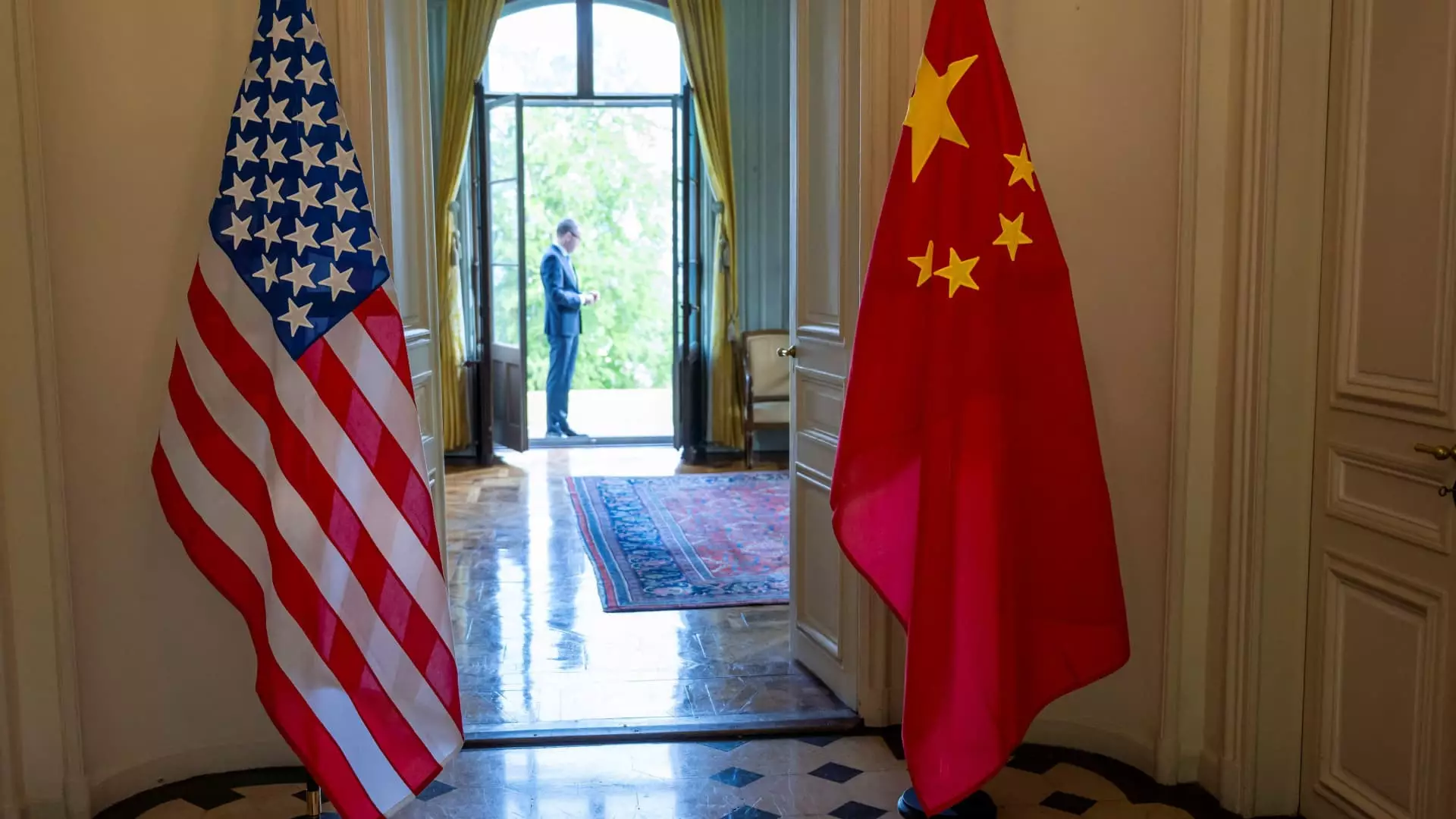The escalating trade conflict between the United States and China has reached a dangerous impasse. Treasury Secretary Scott Bessent recently revealed that negotiations between the two economic superpowers are “a bit stalled.” This development is concerning, particularly as it comes on the heels of intense negotiations that, just a month ago, appeared to yield significant promise. The reality of the situation now begs the question: are we witnessing the slow unraveling of what should be a synergistic relationship?
The last major breakthrough, a fragile accord reached in Switzerland on May 12, allowed both nations to avoid further escalating tariffs. While a temporary proscription on tariff hikes seemed favorable for economic stability, it was but a fragile veneer over deeply rooted frictions. Backtracking on tariff increases may provide short-term relief, but it fails to address the underlying complexities governing their interactions. When economic policy resembles a seesaw, the position tends to move unpredictably, reflecting disarray rather than deft diplomacy.
The Quest for Direct Leadership Engagement
Bessent’s remarks suggest one bleak but increasingly evident truth: to revive negotiations, direct dialogue between President Trump and President Xi Jinping is essential. Yet herein lies a contradictory quandary. The very nature of their relationship is premised on mutual respect combined with a substantial degree of caution, compounded by both leaders’ political imperatives. Diplomacy at this level should be fluid, but the current landscape is anything but. Repeated commentators emphasize that Trump is eager to engage with Xi, but China’s response has been predictably cautious, insisting on a certainty of outcomes before committing to further discussions.
Politics has a morbid sense of irony; high-stakes relationships spanning continents often hang by the thinnest threads of trust. With Trump’s penchant for unpredictability, it requires nothing short of a leap of faith for Xi to accept a call amidst the backdrop of rising U.S. tariffs and restrictions on technology exports. History highlights both nations’ proclivity for tumult, creating a breeding ground for uncertainty, and it is precisely this uncertainty threatening to derail any potential cohesiveness.
Complexities of Bilateral Relations
The simmering tensions are not simply limited to tariffs; they expand into a broader spectrum of economic, technological, and military considerations. The recent announcement of the U.S. revoking visas for Chinese students signals an alarming trend that confounds rather than clarifies the complexities of international relationships. While the U.S. government believes these measures are in response to security concerns, from a liberal perspective, such restrictions can only be seen as detrimental to scholarly and cultural exchange.
By imposing tech restrictions and targeting educational pathways, the U.S. risks not only alienating a significant segment of the global population but also curtailing its own economic potential. After all, students educated in the U.S. are often at the forefront of innovation, providing unique insights and contributions that are difficult to replicate elsewhere. Stifling this flow threatens to misfire in the long run, counteracting aspirations for a more innovative future, while fraying the relationship further.
A Call for Pragmatism and Collaboration
The international diplomatic community must urge both U.S. and Chinese leaders towards pragmatic solutions that transcend mere economic talks. The complex web of international trade requires more than just dialogue—it necessitates open-mindedness and a willingness to engage with mutual benefit in mind. While both nations portray themselves as champions of their national interests, they must not lose sight of the interdependence that binds them. The success of one nation often coincides with the prosperity of the other, particularly in realms such as technology and climate.
Therefore, the expectation is clear: both leaders must actively foster an environment conducive to negotiation rather than one rife with distrust and retaliation. For the precarious peace that currently exists, patience and a spirit of cooperation are paramount. Distilling grievances into actionable items for discussion stands as the only viable pathway toward alleviating tensions, ensuring both nations can avoid the pitfalls of isolationism and binary thinking.
What’s at stake now is not simply the outcome of trade—a bullet point on bureaucratic to-do lists—but the broader ramifications for global stability, innovation, and collaboration in an increasingly complex world. Time will tell whether the giants can meet on common ground, or if we are merely spectators to a drawn-out stalemate with unprecedented consequences.

